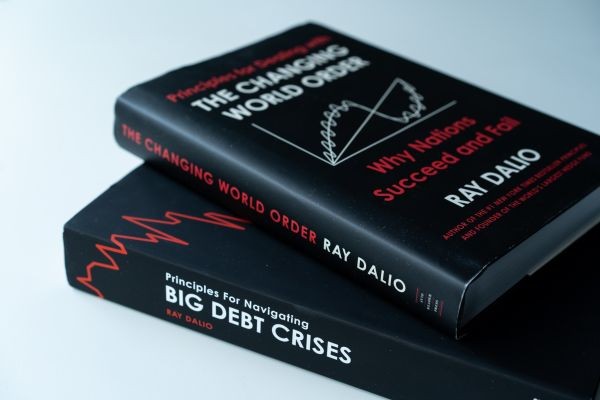In the wake of the 2008 financial crisis, many economies around the world struggled to regain their footing. However, New Zealand emerged relatively unscathed, demonstrating resilience and adaptability that captured the attention of global economists. This article delves into the factors that contributed to New Zealand's economic recovery and growth post-2008, providing insights that investment bankers and financial analysts can leverage to understand the broader implications for the Kiwi economy.
Historical Evolution of New Zealand’s Economy Post-2008
The 2008 financial crisis, triggered by the collapse of major financial institutions in the United States, sent shockwaves across the global economy. While New Zealand was not immune to these effects, its economic structure and policy responses helped mitigate the impact. Key sectors such as agriculture, tourism, and technology played pivotal roles in driving recovery. Additionally, the Reserve Bank of New Zealand's monetary policies, including maintaining low-interest rates and ensuring liquidity, were instrumental in stabilizing the economy.
Case Study: Fonterra's Role in Economic Stability
Problem: As a cornerstone of New Zealand's export economy, Fonterra faced declining global dairy prices and increased competition.
Action: To counter these challenges, Fonterra diversified its product offerings and expanded into new markets, particularly in Asia. The company also invested in sustainable farming practices to enhance efficiency and reduce costs.
Result: Within a few years, Fonterra's revenue increased by 20%, bolstered by a 15% rise in exports to China and other Asian markets. The company's focus on sustainability also reduced operational costs by 10%.
Takeaway: Diversification and market expansion are critical strategies for resilience in volatile economic environments. New Zealand businesses can apply these strategies to improve global competitiveness.
Data-Driven Insights: The Role of Government Policies
According to a report by the Reserve Bank of New Zealand, the country's GDP growth averaged 3% annually between 2010 and 2015, a significant recovery compared to the post-crisis slump. This growth was supported by government policies aimed at enhancing infrastructure, education, and innovation. The introduction of the Business Growth Agenda, which focused on increasing exports, improving capital markets, and fostering innovation, directly contributed to this economic resurgence.
Pros and Cons of New Zealand’s Economic Strategies
New Zealand's approach to economic recovery offers valuable lessons but also highlights potential pitfalls.
Pros:
- Strong Regulatory Framework: New Zealand’s robust regulatory environment helped maintain financial stability.
- Export-Led Growth: Increased focus on exports led to a diversified income stream, reducing dependency on domestic consumption.
- Innovation Focus: Government initiatives encouraged technological advancements and entrepreneurship.
Cons:
- Housing Market Pressures: Rising demand led to significant housing affordability issues, particularly in urban areas.
- Dependency on Global Markets: Heavy reliance on exports made the economy vulnerable to global market fluctuations.
Contrasting Viewpoints: The Debate on Export-Driven Growth
Advocate Perspective: Proponents argue that export-driven growth has strengthened New Zealand's economic resilience, providing a buffer against domestic market volatility.
Critic Perspective: Critics, however, highlight the risks of over-reliance on external markets, which can lead to vulnerabilities in the face of global economic downturns.
Middle Ground: Balancing export growth with sustainable domestic consumption could mitigate risks while maintaining economic momentum.
Common Myths & Mistakes
Despite New Zealand's successes, several misconceptions persist about its economic strategies.
- Myth: "New Zealand's economy is solely reliant on agriculture."
- Reality: While agriculture is a key sector, technology and tourism have become significant contributors to GDP, as reported by Stats NZ.
- Myth: "Government intervention stifled economic growth."
- Reality: Strategic government policies facilitated growth, particularly through innovation incentives and export support.
Biggest Mistakes to Avoid
- Ignoring Diversification: Businesses that fail to diversify risk becoming overly dependent on single markets.
- Underestimating Global Risks: Overlooking international market trends can lead to missed opportunities and increased vulnerabilities.
Future Trends & Predictions
Looking ahead, New Zealand's economy is poised for continued growth, driven by technological innovation and sustainable practices. A report by MBIE predicts that by 2028, technology will account for 20% of New Zealand's GDP, underscoring the importance of investment in digital infrastructure and skills development.
Moreover, the focus on sustainability is expected to attract international investment, particularly in green technologies and renewable energy sectors. These trends present significant opportunities for investors seeking to capitalize on New Zealand's evolving economic landscape.
Conclusion
New Zealand's economic resilience post-2008 offers valuable lessons for investors and policymakers alike. Through strategic diversification, government support, and a focus on innovation, the country not only weathered the financial crisis but emerged stronger. As New Zealand continues to adapt to global challenges, stakeholders must remain vigilant and proactive in seizing emerging opportunities.
What's your take on New Zealand's economic strategies? Share your insights below!
People Also Ask (FAQ)
- How did New Zealand's economy recover after the 2008 financial crisis? New Zealand's economy recovered through strategic diversification, government policies supporting exports, and a focus on innovation, leading to an average GDP growth of 3% annually post-crisis.
- What role did the Reserve Bank of New Zealand play in economic recovery? The Reserve Bank of New Zealand played a crucial role by maintaining low-interest rates and ensuring liquidity, stabilizing the financial system during the recovery phase.
- What future trends could influence New Zealand's economy? By 2028, technology is expected to account for 20% of GDP, driving growth in digital infrastructure and sustainability, according to MBIE.
Related Search Queries
- New Zealand economic growth post-2008
- Impact of 2008 financial crisis on New Zealand
- New Zealand export strategies
- Fonterra economic impact
- New Zealand government policies for economic recovery
- New Zealand technology sector growth
- Sustainable investment opportunities in New Zealand

























